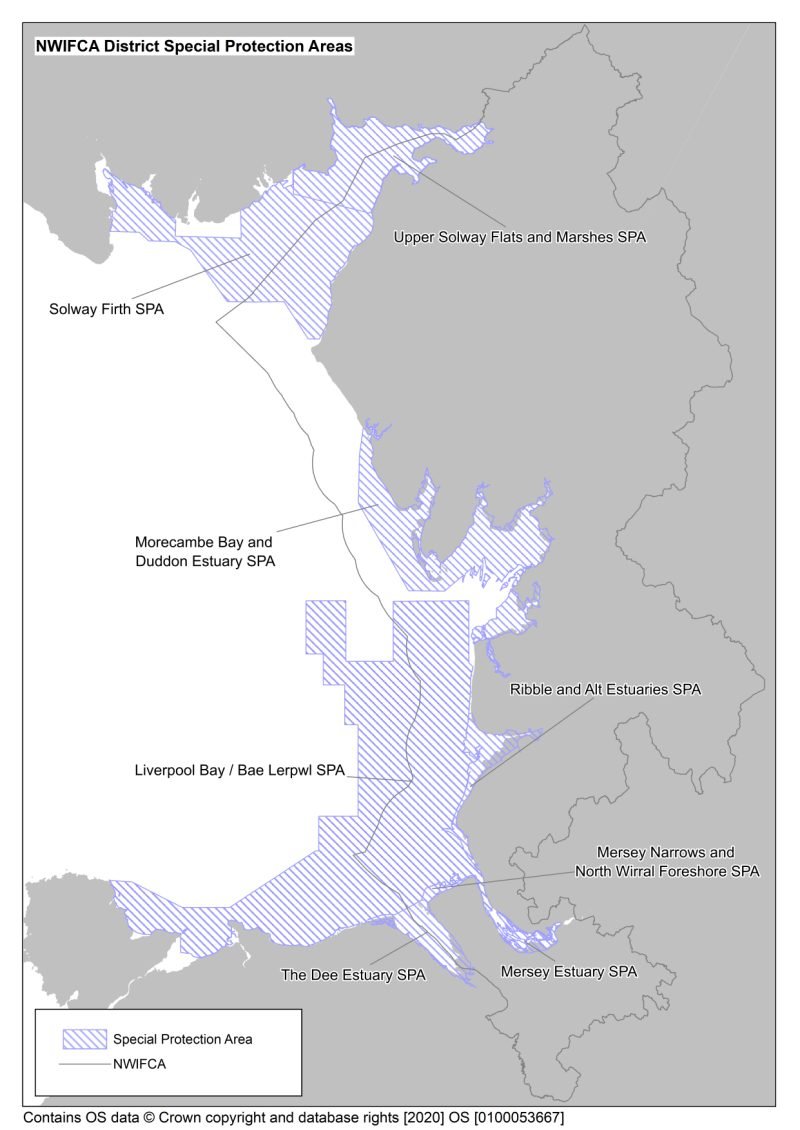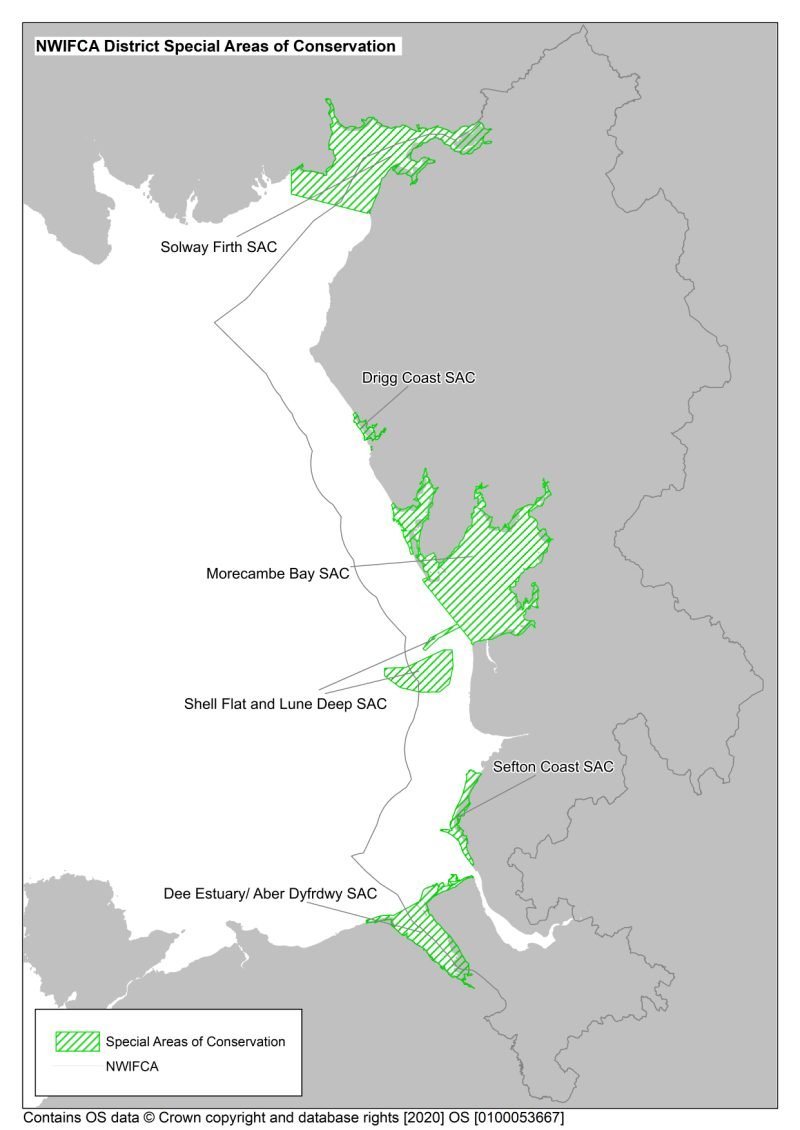European Marine Sites (EMSs)
EMSs are areas of the marine environment that have been designated for protection under European legislation, they are sometimes referred to as Natura 2000, and are found across Europe. EMSs consist of two types, Special Protection Areas (SPAs) which protect birds and their supporting habitats and Special Areas of Conservation (SACs) which protect other wildlife and important habitats. EMSs aim to warrant long-term survival of Europe’s most valuable and threatened habitats and species. It is part of NWIFCA’s conservation duties to manage fishing activity within the EMSs in our district to ensure no adverse effect on the sites.
SPAs are designated under the Birds Directive to protect bird species of European importance that are listed in Annex I of the Directive and/or regularly occurring migratory birds in the EU (e.g. overwintering birds such as oystercatcher and knot in the bays and estuaries along our coast).
SACs are designated under the Habitats Directive to protect habitats and species of European Importance that are listed in Annex I and II of the Directive (e.g. reefs and seagrass).
Changes were made to the 2017 Conservation of Habitat and Species regulations post-Brexit so that regulations continued to operate effectively after the UK left the EU. The new 2019 regulations created the national site network to replace Natura 2000. The national site network comprises of SACs and SPAs previously designated. The majority of the changes involved reassigning functions from the European Commission to the appropriate authorities in England and Wales.
If you would like to read more about the 2019 regulations, here are two useful links:
- The Conservation of Habitats and Species Regulations 2017 (legislation.gov.uk)
- Changes to the Habitats Regulations 2017 – GOV.UK (www.gov.uk)
EMSs in the North West
There are six SACs and seven SPAs within the NWIFCA district and you can find out more about each one below.
Defra revised approach to management of fisheries in EMSs
The Government have revised their approach to the management of fisheries in EMSs in order to bring it in line with other activities and protect important habitats and species as part of our obligations under the Habitats and Birds Directives. The revised approach means that fishing activities are now to be assessed in the same way that other activities taking place in EMSs currently are, such as construction, dredging and scientific projects.
This work began in 2012-13, where fisheries regulators who had not previously assessed fishing under their remit (IFCAs and MMO) were given a December 2016 deadline to have brought in management where it had been assessed to be needed.
As a result, NWIFCA has been engaged in a large amount of work to assess all fishing activity in our district. This has to date resulted in one new byelaw – NWIFCA Byelaw 6 – Protection for European Marine Site Features, where bottom towed gear has been prohibited from areas of reef, and seagrass beds in Morecambe Bay, and bait collection and hand gathering has been prohibited from the seagrass beds.
The Science Team work closely with Natural England throughout the process of assessing potential risk from fishing to conservation features. The majority of fisheries within the district’s EMSs have been assessed and you can view the individual Habitats Regulations Assessments (HRAs) here.
Although not all HRAs have been fully completed, Natural England have agreed that it is not anticipated that any further measures will be required. Due to the nature and high variability of our cockle and mussel fisheries, it is problematic to include them within the same process, and therefore HRAs are carried out on these fisheries on an individual basis as and when they are likely to occur.
More information on the revised approach can be found on the Marine Management Organisation’s website.

